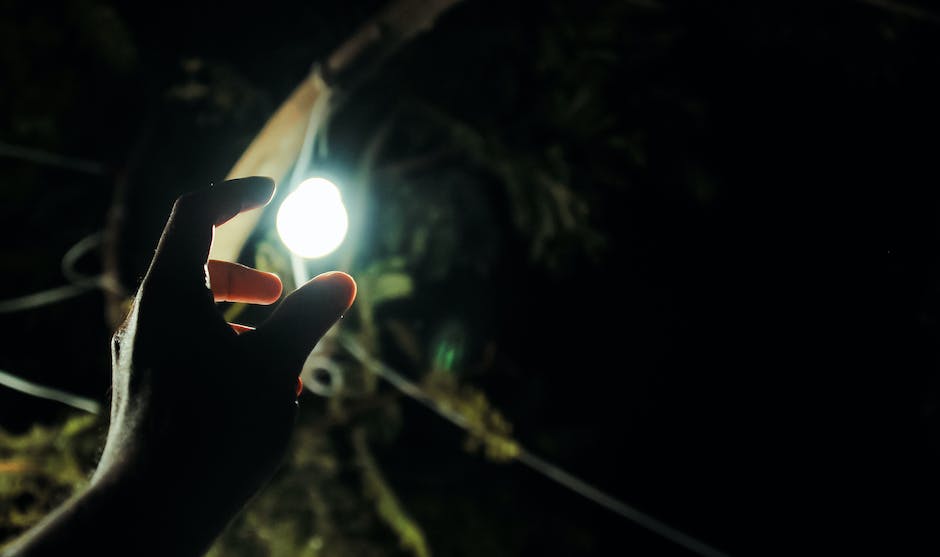In the myriad folds of human experience, the quest for healing transcends the mere alleviation of physical symptoms to touch upon the profound realms of the spirit. Spiritual healing, an ancient art form revered across diverse cultures and epochs, beckons the modern seeker to discover its rich tapestry. At the heart of this practice lies a profound belief in the interconnectedness of body, mind, and spirit—a belief that healing extends beyond our physical form. This essay invites you on a journey through the ethereal landscape of spiritual healing, unearthing the essence of its transformative power, examining the mosaic of methods that define its practice, and illuminating the path for those called to its service.
Understanding Spiritual Healing
Understanding Spiritual Healing
Spiritual healing is the practice of restoring balance and harmony to the body, mind, and spirit through non-physical means. Often seen as a holistic approach, it differs from traditional medicine in that it seeks to address the energetic and spiritual aspects of health, rather than focusing solely on the physical. While conventional medicine treats symptoms and diseases with tangible methods such as drugs and surgery, spiritual healing aims to tap into the body’s inherent ability to heal itself by aligning one’s energy or spirit.
Historical Roots and Cross-Cultural Practices
The roots of spiritual healing extend back to ancient civilizations and are woven into the fabric of numerous cultures and religions around the world. Practices such as Shamanic healing from tribal societies, Ayurveda from India, Traditional Chinese Medicine, and Reiki from Japan demonstrate the global embrace of spiritual healing. Each of these traditions holds that life force energy, whether referred to as chi, prana, or another term, plays a critical role in maintaining health and well-being.
Testimonials and Practitioner Insights
Personal accounts from individuals who have undergone spiritual healing often describe experiences of profound peace, emotional release, and sometimes immediate relief from physical or psychological ailments. Practitioners of spiritual healing typically emphasize the importance of intention, belief, and the unconditional love in the healing process. They often report a heightened sense of intuition and describe their role as facilitators or channels of universal healing energy.
-

Celestial Soul Eco-Friendly Tote Bag
$18.50 Select options This product has multiple variants. The options may be chosen on the product page -

Celestial Soul Women’s T-Shirt
Price range: $20.00 through $21.50 Select options This product has multiple variants. The options may be chosen on the product page
Different Methodologies
- Reiki: A Japanese technique for stress reduction that promotes healing by channeling energy through touch.
- Chakra Balancing: Focuses on the energy centers of the body, aiming to align and balance them for optimal well-being.
- Energy Healing: Encompasses a variety of practices such as Qigong and acupuncture that work with the body’s life force energy to remove blockages and stimulate the body’s natural healing abilities.
- Meditation and Visualization: Techniques that harness the power of the mind to influence physical and emotional states.
- Prayer and Faith Healing: In many religious traditions, prayer is used to invoke divine intervention in the healing process.
Modern Reception and Science
In modern times, spiritual healing often coexists with conventional medicine as part of complementary and alternative medicine (CAM) practices. While the scientific community has studied some aspects of spiritual healing, such as meditation and the placebo effect, much of it remains beyond the scope of current scientific measurement. However, there is increasing interest in the potential for spiritual practices to contribute to overall health and recovery from illness.
Training and Ethical Considerations
For enthusiasts aiming to become practitioners, training can be acquired through workshops, courses, and mentorship with experienced healers. It’s important to approach training with an open mind while maintaining healthy skepticism. Ethical considerations are also crucial; spiritual healers should commit to doing no harm, respecting clients’ boundaries, and providing healing with informed consent and confidentiality.
Embarking on the journey of spiritual healing invites individuals to delve into their inner selves, seeking to understand their personal beliefs, trusting their intuition, and tapping into a cosmic energy that is often seen as the cornerstone of true restoration. Spiritual healing not only serves as a supplement to physical health remedies, but it also profoundly enriches our human experience by offering an alternative path to well-being through self-reflection or helping others heal.

Common Spiritual Healing Practices
Reiki: Universal Life Energy
The practice of Reiki, a Japanese spiritual healing art, represents the channeling of universal life energy by a practitioner, directed to aid someone in need. Originating from the combination of two Japanese words, “Rei” for “universal” and “Ki” for “life energy,” Reiki’s roots reach into the early 20th century, stemming from Mikao Usui’s deep spiritual awakening. The foundational belief of Reiki lies in the concept that harmonizing the life energy within can enhance the body’s inherent healing capacities.
Throughout a Reiki session, participants may be fully dressed while the healer’s hands float above or make light contact with key body areas. Practitioners frequently describe experiencing warmth or a tingling sensation as the energy is believed to be conveyed. Proponents of Reiki advocate for its ability to reduce stress, promote emotional well-being, and provide respite from persistent pain, despite the lack of conclusive scientific proof.
Energy Healing: The Body’s Invisible Forces
Energy healing, also known as biofield therapy, encompasses a variety of practices aiming to manipulate the energy fields believed to surround and penetrate the human body. This category of spiritual healing includes practices like acupuncture, qigong, and therapeutic touch. These methodologies are rooted in ancient Eastern ideologies that assert the existence of a vital life force (Qi or Chi) that maintains health and vitality.
Acupuncture, for example, involves inserting very fine needles into the skin at specific points along the body’s meridians to clear blockages and encourage a smooth flow of energy. On the other hand, qigong practices blend movement, breathing techniques, and meditation to cultivate and balance Qi within the body.
Prayer: Healing Through Faith
Prayer, a spiritual healing method embraced by many religions around the world, often seeks divine intervention in the healing process. People use prayer to request personal healing, to aid others in their struggles, or to gain strength and comfort during times of illness. While the efficacy of prayer cannot be scientifically quantified, numerous individuals report a sense of peace and solace that contributes to their overall wellness. Several studies exploring the intersection of spirituality and health have suggested that regular prayer may have a positive effect on a person’s mental and physical health, potentially due, in part, to the meditative aspects and the hope fostered by faith-based practices.
Meditation: The Mind-Body Connection
Meditation, a cornerstone practice in many spiritual and religious traditions, involves the cultivation of a calm, focused state of mind. Techniques can vary widely—from mindfulness meditation, which entails paying attention to the breath or sensations in the body without judgment, to transcendental meditation, which utilizes a mantra or repetitive phrase to achieve a state of relaxed awareness.
Regular meditation is often recommended for its numerous health benefits, including reduced stress, anxiety reduction, and improved concentration. Scientific studies have shown that meditation can lead to changes in brain structure and function, suggesting that it might have tangible effects on mental and physical health.
Sound Therapy: Vibrations That Heal
Sound therapy involves using music, vocalization, or instruments like singing bowls, bells, and gongs to facilitate healing. The concept revolves around the idea that sound vibrations can recalibrate the energy in the body, potentially leading to improved health and well-being.
Tibetan singing bowls, for example, produce harmonic overtones that are thought to synchronize with brain waves to induce deep meditative and peaceful states. Sound therapy can be self-administered or guided by a practitioner and is often integrated into other healing practices like yoga or meditation.
In navigating the realm of spiritual healing, an open mind and a measured dose of skepticism can serve you well. One’s own experiences and belief systems significantly affect how they might perceive the impact of spiritual healing therapies. Scientific inquiry into these practices offers glimpses into potential health benefits, yet hard evidence is often tantalizingly out of reach. Regardless of whether individuals seek relief from physical ailments, or a sense of mental and emotional equilibrium, a myriad of spiritual healing techniques—both ancient and contemporary—provide solace and avenues for discovery.

Becoming a Spiritual Healer
Delving Deeper into Spiritual Healing
Spiritual healing can be envisioned as a comprehensive method that seeks to bring the physical, mental, and spiritual components of an individual into alignment. This tradition embraces a variety of practices, from energy work and meditation to prayer and the engagement with natural elements. To embark on the path of a spiritual healer is to make a deep-rooted pledge toward one’s own continuous evolution, coupled with a heartfelt drive to guide others on their paths to wellness.
Training and Education
Embarking on a path to becoming a spiritual healer starts with education. Enroll in courses and workshops led by respected practitioners in the field. These might range from Reiki, Pranic Healing, Theta Healing, to more shamanic or indigenous healing practices. Many of these programs offer certifications upon completion, which not only adds credibility but also ensures that you have a structured understanding of the methodologies.
Certifications and Modalities
Certifications are an important stepping stone in becoming a professional spiritual healer. They not only affirm your training but also introduce you to a community of healers. Explore different modalities to find the one that resonates with you – whether it’s working with energy fields, sound therapy, or aromatherapy. Many healers are trained in multiple disciplines, offering a more comprehensive approach to their practice.
Ethical Considerations
Ethics play a crucial role. As a spiritual healer, you are entrusted with the personal well-being of others. It’s essential to respect boundaries, confidentiality, and to practice with integrity. Create a clear ethical code for your practice and commit to continuous learning to address the diverse needs and cultural sensitivities of your clients.
Cultivating Intuition and Empathy
To connect deeply with clients, you must cultivate a strong sense of intuition and empathy. These skills allow you to sense the subtle energies and emotional states of those you’re helping. Regular meditation, mindfulness practices, and self-reflection are useful for developing these abilities. Understanding your own energy and boundaries is critical to preventing burnout and to foster a sustainable practice.
Learning Resources
Books, online courses, and spiritual workshops are great resources. Authors like Caroline Myss, Deepak Chopra, and Louise Hay provide insightful literature on the human energy system and the power of belief in healing. Online platforms like Udemy, Sounds True, and the Shift Network offer courses in various healing techniques.
Communities and Support
Joining healing communities both online and offline can be invaluable. These networks provide support, share knowledge, and offer opportunities for practice and collaboration. Attend local meetups, healing circles, or spiritual retreats to connect with other like-minded individuals.
Practical Experience
Gaining practical experience is as important as formal training. Offer free sessions to friends or volunteers to hone your skills, receive feedback, and build confidence. This hands-on approach will help you integrate your knowledge and develop a personal style of healing.
Continual Personal Development
A spiritual healer’s journey is never complete. It involves a continuous commitment to personal development and learning. Attending advanced courses, retreats, and engaging with varied healing traditions will keep your practice vibrant and effective. Remember to nurture your own spirit along the way, as self-healing is the foundation of your ability to heal others.
The journey from an enthusiastic hobbyist to a proficient spiritual healer is one paved with humility, passion, and a devotion to serving others. This transformation allows individuals to become conduits of hope and healing for those who seek solace and restoration in their times of need.

Challenges and Controversies
Skepticism in Spiritual Healing
Spiritual healing traverses the fragile divide between doubt and acceptance. It operates in a space where skeptics view it with caution, questioning its efficacy due to a perceived lack of empirical support. Critics are quick to point out that without scientific validation, spiritual healing resembles a placebo, driven more by belief and suggestibility than by any measurable therapeutic intervention. Furthermore, the absence of standardized training and oversight raises concerns about the quality and consistency of healing practices.
Yet, advocates for spiritual healing believe in its synergistic role alongside traditional medical treatments. They propose that it addresses the comprehensive well-being of a person, marrying the emotional and spiritual aspects with the physical. Practices like Reiki, energy work, and shamanistic interventions are claimed by supporters to contribute to mental health improvements, reduced stress levels, and effective pain management. They assert that the value of anecdotal proof and personal experiences shouldn’t be underestimated, positing that these subjective accounts of healing hold a place of significance alongside objective, quantifiable scientific findings.
Legal and Regulatory Challenges
In the legal landscape, spiritual healing occupies a grey area. In the United States, regulations vary significantly by state. Some areas require certification or registration for practicing healers, while others have no formal requirements, creating a patchwork of standards. For instance, Reiki practitioners and energy healers may not need to hold any specific license to practice, depending on the locale. However, the rise in popularity of such practices has led some states to develop more defined policies to protect consumers from potential fraud or harm.
Healers must be careful not to diagnose or treat medical conditions unless they possess the proper credentials to do so. This is to avoid the unauthorized practice of medicine—a legal offense with potential ramifications from fines to imprisonment. Some practitioners safeguard against this by positioning their services as complementary or spiritual support rather than replacements for traditional medical care.
Enthusiasts seeking to broaden their skills in spiritual healing methods must navigate the skepticism and legal challenges inherent in the practice. They often take courses and seek certifications that adhere to any existent local regulations. By training under reputable instructors and organizations, they aim to establish legitimacy and build trust with clients.
Furthermore, maintaining transparency with clients regarding the nature of the services provided and setting realistic expectations is crucial. Some practitioners include disclaimers or informed consent forms that clearly state the spiritual or energetic nature of their services and clarify that they are not a substitute for medical treatment. They also ensure to stay informed about the latest research, integrating new findings into their practice to enhance credibility and effectiveness.
Recent Research and Mainstream Acceptance
Despite ongoing skepticism, recent research has begun to investigate the effects of spiritual healing practices. Studies on meditation and mindfulness have shown measurable changes in brain activity and reduced symptoms of stress and anxiety. Similar scientific inquiries into Reiki and energy healing are exploring their potential impact on wellbeing. These studies often utilize randomized controlled trials and double-blind setups in an attempt to validate the practice to the scientific community.
However, the intangible nature of spiritual healing presents methodological challenges, and results can be difficult to quantify. This leaves space for both advocates and critics to debate the interpretations and implications of the findings. Practitioners often feel that the essence of their work—a personal and subjective experience—cannot be fully captured through traditional scientific methods.
Balancing a Personal Journey with Real-World Issues
As enthusiasm for spiritual healing grows, enthusiasts must reconcile their personal journey with the real-world issues surrounding the practice. They engage with both supportive and skeptical communities, contributing to a robust dialogue about the value and place of spiritual healing in modern healthcare. By adhering to ethical standards, respecting legal boundaries, and remaining open to ongoing learning and self-reflection, they contribute to a more inclusive understanding of health and wellbeing that honors a diversity of experiences and approaches.
By fostering open-mindedness and evidence-based practice, enthusiasts aim to bridge the gap between ancient traditions and contemporary wellness, advocating for a world where spiritual healing is respected as part of a comprehensive approach to health and healing.

The odyssey through the complexities of spiritual healing reveals it as both a sanctuary of solace and a nexus of controversies. As we stand on the cusp of a new era where ancient wisdom and modern scrutiny converge, the responsibility rests upon each practitioner and enthusiast to navigate the waters of skepticism and regulation with integrity and insight. The tapestry of spiritual healing, woven with threads of tradition, innovation, and human empathy, offers a vision of well-being that transcends the limitations of conventional paradigms. It is a domain where the heart’s calling meets the rigorous demands of the mind, crafting an alchemy that could enrich lives, and perhaps, subtly reshape the understanding of healing itself.

